Do you need practical strategies to teach conflict resolution to your children?
This is a guest post from Erin Swanson, Co-founder and CCO of RAISE Programs, a social emotional program for children and their families.
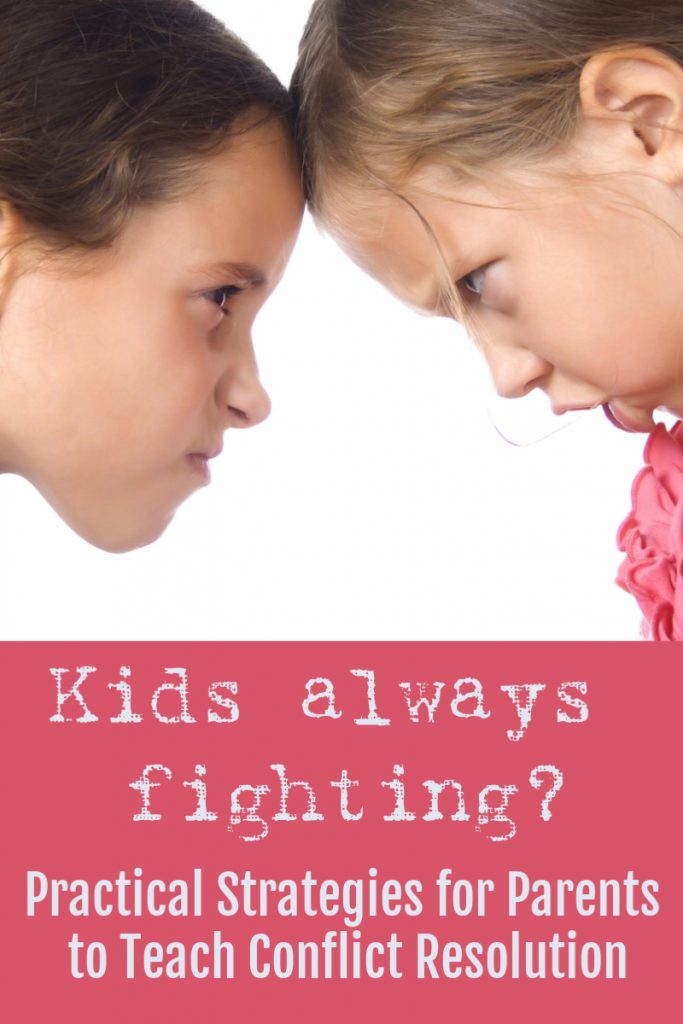
When I first became a teacher, I thought I was helping my students by intervening in their conflicts. It was painful to see them struggle, crying and yelling at one another. It felt like my responsibility to ensure they resolved issues peacefully. The trouble was, they soon depended on me to help them resolve even the smallest of arguments. By constantly involving myself in the process, I became my students’ crutch. I robbed them of the empowering experience of learning these skills themselves.
As I became a more experienced teacher, I soon realized that it was not my responsibility to hold my students’ hands through conflict. Rather, it was my duty to explicitly teach and model conflict resolution skills, so my students could practice and learn how to apply them on their own. This one tweak changed the classroom dynamic dramatically. It can change the atmosphere of your home as well. Imagine a home where your children independently and peacefully resolve conflict with each other without running straight to you to tattle. Read on to find out how!
Modeling Healthy Conflict
We must not only teach healthy conflict resolution skills, but model them as well. If we teach our children how to peacefully resolve conflict, but we then scream at our partners in a rage, we are giving our children mixed messages. Children are much more likely to follow what you do than listen to what you say. Research shows that children learn attitudes and beliefs through observations of others’ behaviors. Children are most likely to imitate the behavior of parents and older siblings, especially if those family members are viewed as loving, competent, and powerful.
Even more, children watch how their parents engage in conflict with each other. Studies show that unhealthy parental conflict (characterized by hostility, anger, and aggression) threatens children’s sense of security. However, when parents argue in a healthy and constructive way (characterized by affection, problem-solving strategies, and compromise), children feel safe. Rather than hide family conflict behind closed doors, it is better to openly model it for children in a productive way. Before you teach your child about conflict, consider how you manage it yourself. We all have room to grow. What better inspiration is there than knowing we are role models for our children?
Teaching Conflict Resolution Skills
Now that we have modeled healthy conflict for our children, we can begin to teach the skills explicitly. Children don’t choose to behave poorly. They simply don’t have the skills to communicate their needs in a healthy way. They kick, scream, and talk back because they have yet to learn self-regulation tools. That’s where you step in. You help your child learn how to ride a bike. Why wouldn’t you help your child learn how to release anger?
I am a co-founder of RAISE Programs, a social emotional program for children and their families. We have developed a simple 4 step process you can use to teach your children how to practice self-regulation and navigate conflict.
4 Steps to Conflict Resolution
#1 Stop
Before children can self-regulate or resolve a conflict, they must speak up for themselves. When something happens that makes children uncomfortable, they might shy away from saying anything at all. On the contrary, they might explode by yelling at their peers which only serves to further escalate the conflict.
You will rarely see a middle ground in a child’s response. Yet, that’s what we’re aiming for. We can teach children that they can speak up for themselves while using a tone that is confident, firm, and calm. We can teach them the importance of body language by showing them to stand up tall and look someone in the eye. It’s best to practice the tone, body language, and words your children might use when standing up for themselves ahead of time. Your children might use words as simple as, “Stop. I don’t like that.”
#2 Cool Down
Now that the child has put a stop to the conflict, he/she needs a moment to cool down before trying to resolve it. Children feel their emotions with intensity and any attempt at trying to talk through a conflict at this stage will come from a place of pure emotion, rather than logic. In fact, adults need this same time to cool down before discussing conflict. It might be just a few seconds of deep breathing or 30 minutes of alone time. The time varies based on the situation.
In Michele Borba’s book, Unselfie, she notes, “When children feel stress, their judgment, memory, impulse control, and compassionate instincts are impaired. It is therefore essential that we create time and space for children to decompress and learn their stress triggers.”
Research on the brain supports this. When one is upset, one’s amygdala (in charge of emotional reactions) is firing and one’s prefrontal cortex (in charge of decision-making and logic) is blocked. When the person takes a moment to calm down, the prefrontal cortex kicks in and starts functioning again. It’s during that gap of time when only the amygdala is working that people react instead of respond. By taking time to cool down, we can respond with control and thoughtfulness. The earlier children learn to do this, the better!
We can teach children that they can cool down and release their feelings in a way that does not hurt themselves or someone else.
To cool down, children might:
- Squeeze a stress ball
- Run in place
- Scream into a pillow
- Punch a pillow
- Draw/write about what happened
- Take deep breaths (check out RAISE’s video for kid-friendly breathing ideas)
- Stretch
- Cuddle with a stuffed animal or blanket
- Cry
I found it particularly helpful in my classroom to set up a cozy “Cool Down Spot” which included all sorts of self-regulation tools for children (stress balls, stuffed animals, pillows, calming picture books, soothing photos of nature, coloring supplies, etc.). I taught my students how to use all these tools and we practiced together. My students then took time to brainstorm other healthy ways of cooling down and chose which methods worked best for them. I highly encourage you to set up a space like this at home! Involve your child in the process of decorating it and setting out particularly useful tools.
Once children have cooled down, they are ready to return to the other child(ren) involved for step 3.
#3 Talk
During this step, each child should have the opportunity to share feelings. To do so, we recommend using I-Statements. An I-Statement focuses on your own feelings, rather than jumping to blame how someone else wronged you.
An I-Statement might sound like this: “I felt _______ when you ________. I wish you would please __________.”
#4 Repair
Now that children have expressed their feelings, they are ready to discuss solutions. It is helpful to create a poster with your child(ren) ahead of time that addresses healthy ways to solve different types of problems. This way, children can easily reference the poster in the moment for a speedier resolution. RAISE includes a poster like this in its Conflict Navigation Product.
When Do Parents Need to Intervene?
While our goal is to empower children to solve conflict on their own, we know that sometimes adults still need to intervene. Adults must step in when…
- Children are in danger or are physically hurt
- Children are repeatedly targeting another child on purpose (bullying)
- Children struggle to remember or are too heated with emotions to follow the 4 steps on their own
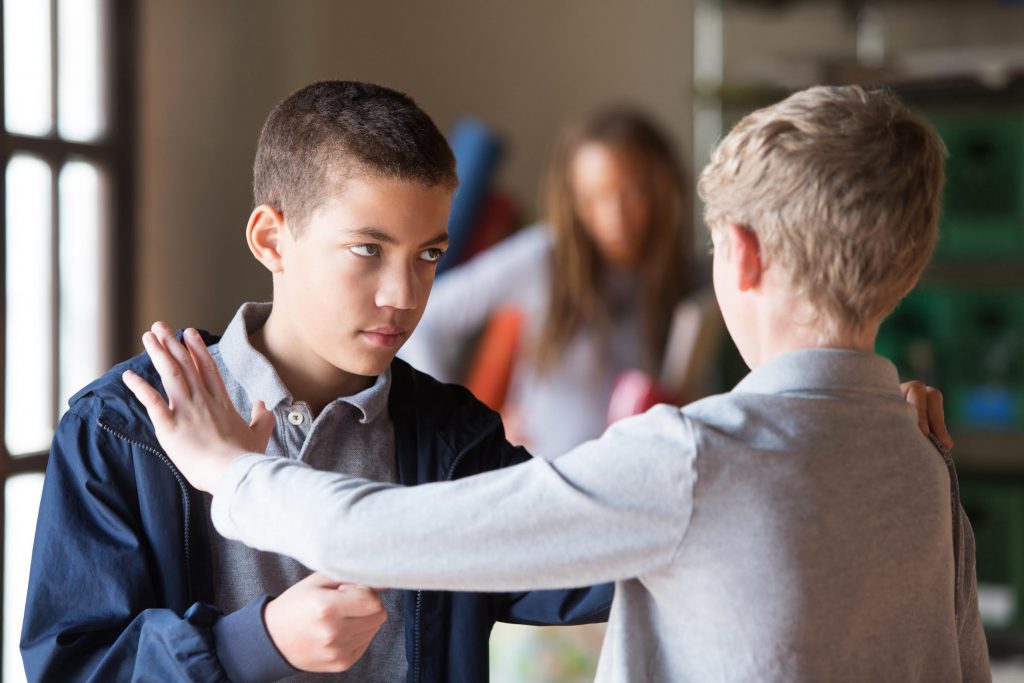
Natural Consequences
With practice, we hope children will come up with ways to solve problems on their own without adult intervention. Yet, sometimes parent-given consequences are still needed. In this case, we recommend natural consequences. Natural consequences are tied to the child’s behavior, rather than being a random consequence with no connection to the behavior. For example, if a child spills milk all over the kitchen floor, a natural consequence would be to have the child grab some towels and clean it up (rather than sitting in a time-out). If a child pushes another child who then scrapes his/her knee, the pusher can get a band-aid and ice pack for the hurt child.
Practice Practice Practice!
Children need consistent guidance and practice to learn these skills. In my classroom, we practiced these skills the whole school year. By about mid-year, children began to master them independently. The more you explicitly teach, model, and practice, the less your child will need your support over time. Don’t give up too quickly! This is big-picture, long-term work that will pay off for the rest of your child’s life.
Want More Guidance? Check out RAISE’s Conflict Product
In our Conflict Navigation Product, we provide all the tools you need to kickstart the process for your family!
In this digital download, you’ll find…
- An informative welcome video to guide you through the resources and our approach to resolving conflict
- A detailed, 14-page guidebook for parents, including research on child development and conflict, instructions on when and how to get involved with conflict, and more
- A 14-page child activity book to help build understanding of why we get frustrated and get involved in conflict as well as strategies for calming and navigating conflict
- Four posters you can print and post around the house to visually reinforce how to manage conflict (black & white, as well as colored version included)
 Erin Swanson is the Co-founder and CCO of RAISE Programs, a social emotional program for children and their families. Prior to starting RAISE, Erin was an elementary school teacher. She received her Master’s in Education from Stanford University. Erin taught Kindergarten, first grade, fourth grade, and fifth grade at both public and private schools in California and Oregon. She is a certified children’s yoga teacher. You can also find Erin through her freelance writing and editing business, creativelyerin.com.
Erin Swanson is the Co-founder and CCO of RAISE Programs, a social emotional program for children and their families. Prior to starting RAISE, Erin was an elementary school teacher. She received her Master’s in Education from Stanford University. Erin taught Kindergarten, first grade, fourth grade, and fifth grade at both public and private schools in California and Oregon. She is a certified children’s yoga teacher. You can also find Erin through her freelance writing and editing business, creativelyerin.com.
Works Cited
Borba, Michele. Unselfie: Why Empathetic Kids Succeed in Our All-about-me World. First Edition. New York: Touchstone, 2016.
Koss, Kalsea J, et al. “Understanding Children’s Emotional Processes and Behavioral Strategies in the Context of Marital Conflict.” Journal of Experimental Child Psychology, U.S. National Library of Medicine, July 2011, www.ncbi.nlm.nih.gov/pmc/articles/PMC3065512/.
Whiteman, Shawn D, et al. “Theoretical Perspectives on Sibling Relationships.” Journal of Family Theory & Review, U.S. National Library of Medicine, 1 June 2011, www.ncbi.nlm.nih.gov/pmc/articles/PMC3127252/.
Photos purchased via Shutterstock.
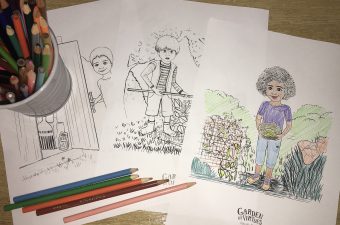
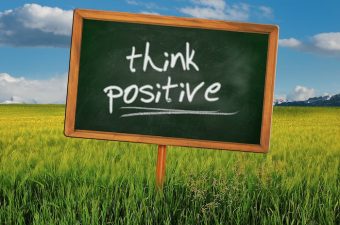
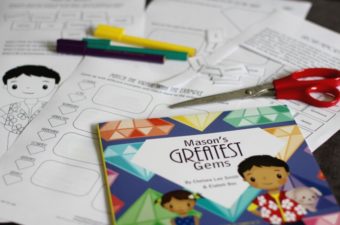
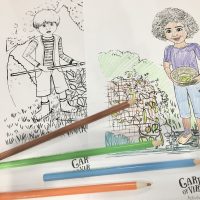
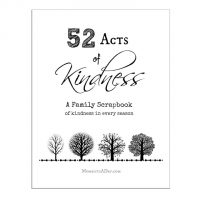
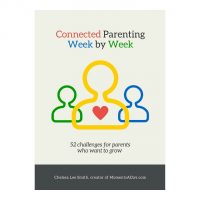
I really enjoyed the PHYSICAL motions you provided to help manage anger. Running in place, punching a pillow, squeezing a ball… all of the things you said are so useful because they provide an outlet for the release of those chemical messengers in our system. With my kids being teenagers now, it’s been great to see those skills pay off. The other day, my son was really mad, and he said, “I’m just going to take a walk and play my drums. Then I’ll be able to think.” All the exercise and strategies I taught him and his sister are paying off! Using movement to help our kids manage and process their feelings is so helpful in so many ways!